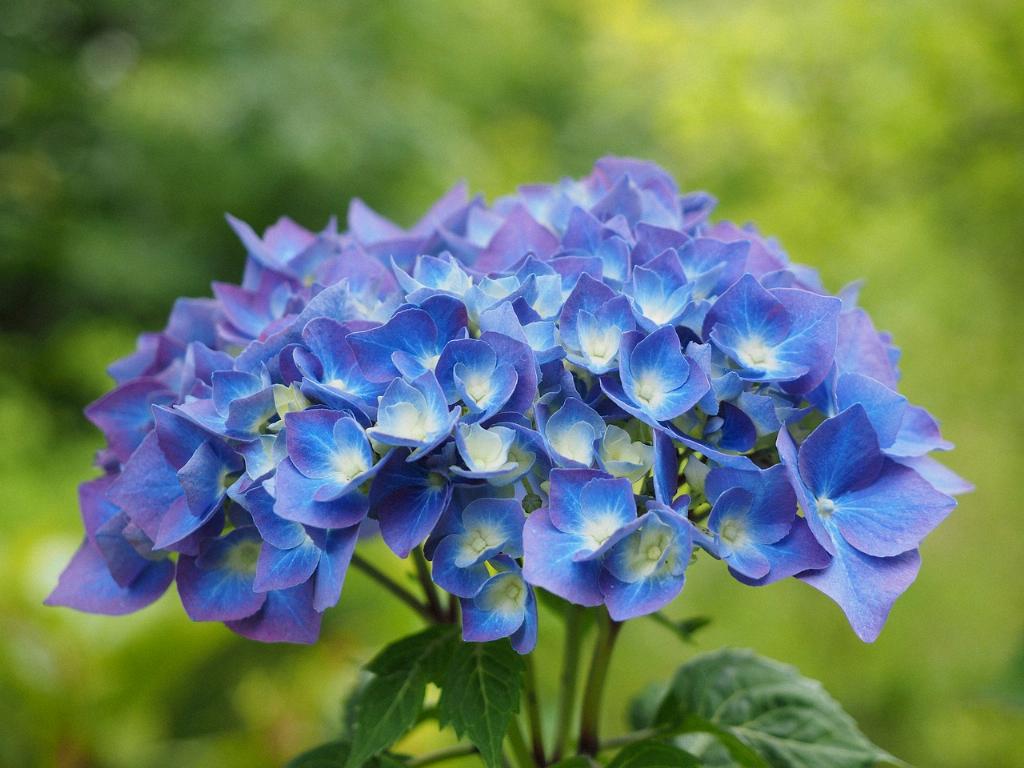Hydrangeas are prized for their lush foliage and vibrant flowers, so it can be concerning when the leaves start to turn brown. There are several factors that can contribute to this issue, ranging from environmental conditions to potential root or stem damage. By understanding these factors, you can take the necessary steps to address the problem and restore your hydrangea to health.
Inadequate Watering
One common reason for brown leaves on hydrangeas is inadequate watering. Hydrangeas require consistent moisture to thrive, especially during hot and dry periods. If the soil becomes too dry, the leaves may start to turn brown and crispy at the edges. It’s important to water deeply and regularly, ensuring that the root zone stays evenly moist but not waterlogged.
Exposure to Strong Light
Hydrangeas prefer dappled or filtered sunlight, and exposure to intense light can lead to leaf browning. Direct sunlight or reflected light can cause sunscald or leaf scorch, where the leaves become discolored and damaged. If your hydrangea is in a location with strong light, consider providing some shade during the hottest parts of the day to protect the foliage.
High Temperatures
Extreme heat can also stress hydrangeas and lead to leaf browning. When temperatures soar, hydrangeas may struggle to take up water effectively, causing the leaves to wilt and discolor. Providing mulch around the base of the plant can help retain soil moisture and regulate the temperature, reducing the risk of heat-related damage.
Dry, Windy Conditions
Dry, windy conditions can exacerbate leaf browning in hydrangeas. Wind can increase moisture loss through evaporation, particularly in exposed or elevated locations. If your hydrangea is in a windy area, consider providing a windbreak or using a spray bottle to mist the foliage occasionally to increase humidity around the plant.
Root or Stem Damage
Damage to the roots or stems of hydrangeas can also result in leaf browning. This damage can occur from injuries, such as accidentally nicking the roots during transplanting, compacted soils that restrict root growth, or overwatering and overfertilizing, which can lead to root rot. Ensuring proper planting procedures and avoiding excessive soil disturbance can help prevent root and stem damage.
Identifying Leaf Scorch
Leaf scorch is a common symptom of stress in hydrangeas, characterized by browning and drying of the leaf margins. It is often caused by a combination of factors, such as inadequate watering, high temperatures, and excessive light exposure. By recognizing the signs of leaf scorch, you can take proactive measures to improve the growing conditions for your hydrangea.
Addressing Leaf Browning
To address leaf browning in hydrangeas, start by assessing the environmental conditions and cultural practices in your garden. Ensure that your hydrangea is planted in a suitable location with well-draining soil and adequate sunlight. Monitor watering habits, especially during periods of heat or drought, and adjust as needed to maintain consistent moisture levels. Consider applying a layer of organic mulch around the base of the plant to help retain soil moisture and regulate temperatures.
Monitoring Plant Health
Regularly monitor the health of your hydrangea and watch for any changes in leaf color or texture. If you notice browning or other signs of stress, investigate the possible causes and make adjustments accordingly. By staying attentive to your hydrangea’s needs and providing appropriate care, you can help prevent leaf browning and promote overall plant health.
Seeking Professional Help
If despite your efforts the leaf browning persists or worsens, consider seeking advice from a local horticulturist or extension service. A professional can help identify the specific issues affecting your hydrangea and provide tailored recommendations for treatment. Don’t hesitate to reach out for expert assistance to ensure the long-term health and vitality of your plant.
Conclusion
In conclusion, brown leaves on hydrangeas can be caused by a variety of factors, including inadequate watering, exposure to strong light, high temperatures, dry, windy conditions, or root and stem damage. By understanding these potential causes and taking proactive steps to address them, you can help your hydrangea thrive and maintain its lush foliage. Remember to monitor your plant’s health regularly, adjust your care practices as needed, and seek professional help if necessary to ensure the well-being of your hydrangea.

